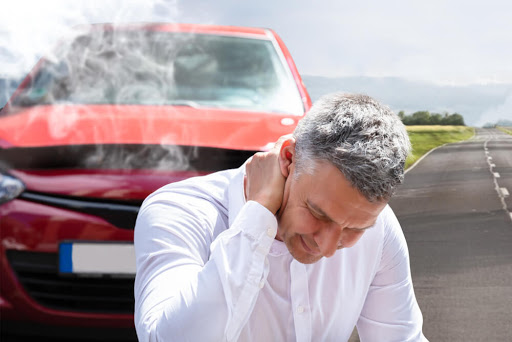What Parts of My Body are Hurt in a San Diego Car Accident?
San Diego Car Accident Attorneys
Rear-end collisions are incredibly common; in fact, according to data from the National Highway Traffic Safety Administration (NHTSA), there were more than 2 million rear-end collisions in the US in 2017. The number of rear-end collisions has actually disappeared in recent years. years. Not only are they responsible for numerous injuries, they also caused nearly 2,500 deaths during 2017. Rear-end collisions account for by far the highest number of collisions among all motor vehicle collisions in transportation.
The nature of a rear-end collision, in which another vehicle hits your vehicle from behind, means that back and neck injuries are quite common. A great deal of force travels through your vehicle and through your body during an even minor rear-end collision, and that force can cause all kinds of damage to your neck, back, and other parts of your body.
How Rear Collisions Cause Back Injuries in San Diego
At first glance, a rear-end collision may not seem like a big deal. They tend to happen at low speeds, so it would appear that the resulting injuries would be relatively minor. Seat belts in the car will surely keep the occupants in their seat during such a collision, and if the impact is significant enough, the airbags will deploy. However, even with modern safety equipment, the body is still under significant stress.
When your car is hit from the rear by another vehicle, it causes all the bodies in your car to move back and forth with sudden force. Force can cause a wide variety of injuries to the body, including tearing of muscles and soft tissues, unnatural compression of joints, and other injuries. Initial injuries to your body, along with how your body copes with those injuries afterward, can put you and any other passenger in the car in an unenviable situation, with loss of mobility, severe pain, and possibly permanent injuries. .
Common Types of Back and Neck Injuries from Rear Collisions
You have 33 vertebrae in your spine. Both the vertebra and the connections between those vertebrae can be injured by the cutting motion of a rear-end collision, not to mention all the surrounding soft tissue. When you realize the many areas of potential injury, it is easier to understand why back and neck injuries are so common in rear-end collisions.
Some of the more common neck and back injuries sustained in rear-end collisions include:
- Slipped discs. Although they are commonly called slipped discs, the actual injury is known as a herniated disc. The discs that cushion your vertebrae against each other and allow flexibility in your spine are made up of a strong outer layer and a soft inner layer. When the outer layer tears and the inner layer sticks out, the disc is herniated.
- Whiplash The most common type of injury from a rear-end collision. The head is thrown forward when the car is hit from behind, then it is thrown back when it reaches the end of the neck and is thrown backwards. Whiplash can include soft tissue damage and can sometimes include upper back damage.
- Spinal cord injuries. The spinal cord, or system of nerves that runs through the spine, can be damaged in a rear-end collision. Damage to the spinal cord can lead to paralysis, numbness, tingling, and other serious problems.
- Spinal fractures. The vertebrae can break during the push caused by the rear collision. Breaks can cause significant pain and loss of mobility.
Measures to Protect Against Rear Collisions
When you consider how many people suffer neck and back injuries in rear-end collisions, it’s no wonder so many end up seeking medical care, insurance compensation, and filing lawsuits due to such accidents. The costs in lives, health care and money have many advocates for better ways to avoid such collisions.
The National Transportation Safety Board (NTSB) advocates for more research on collision avoidance systems in commercial and passenger vehicles. They encourage the purchase of vehicles with autonomous emergency braking and collision warning systems. They also encourage commercial fleet owners to purchase similar types of vehicles.
If you’re not looking for a new vehicle, the best thing to do is practice defensive driving, wear your seatbelt, and make sure your airbags are working. While these basic safety measures will not completely prevent a rear-end collision, they can help minimize the possibility of one and the damage caused by such an accident.
Contact us today if you had a car accident in San Diego Ca, San Diego Traffic Accident Lawyers can help you receive medical treatment for your injuries at no cost.
